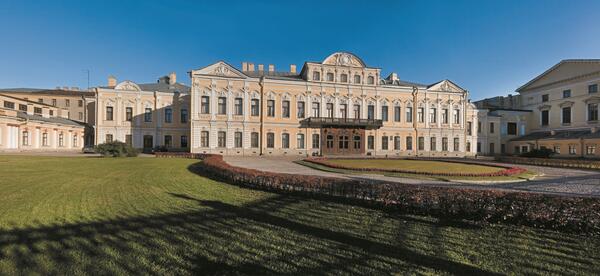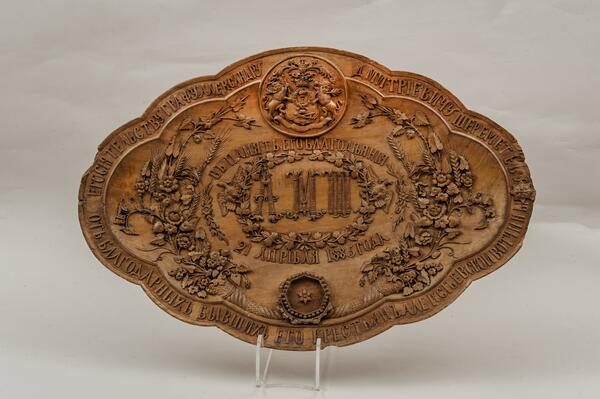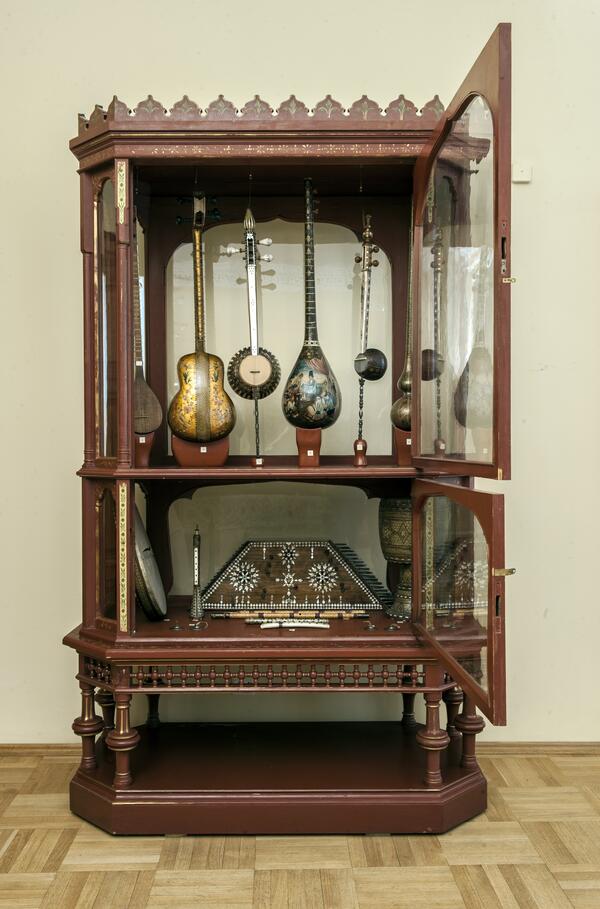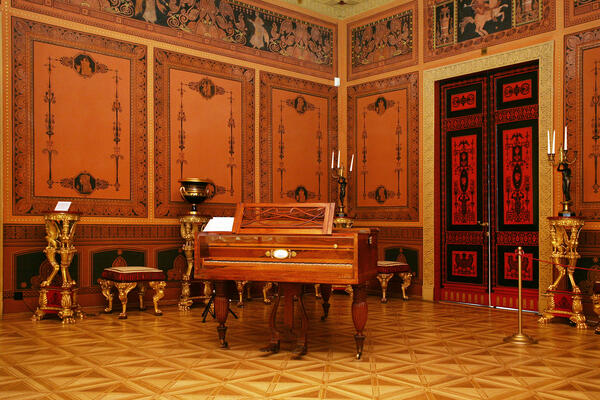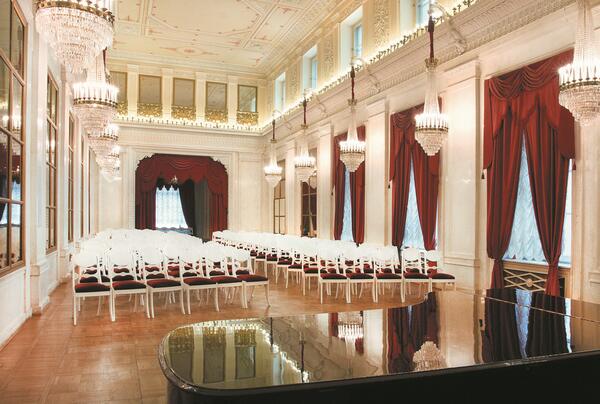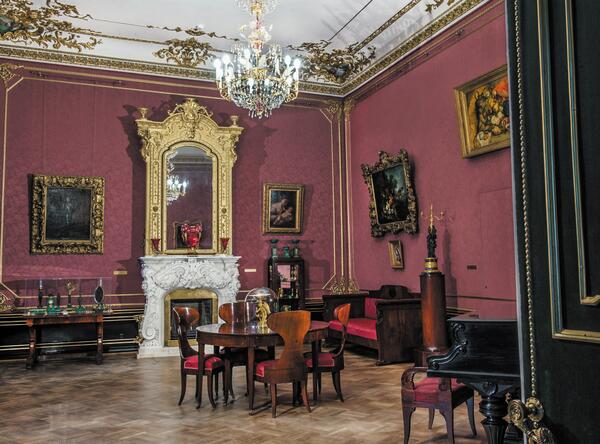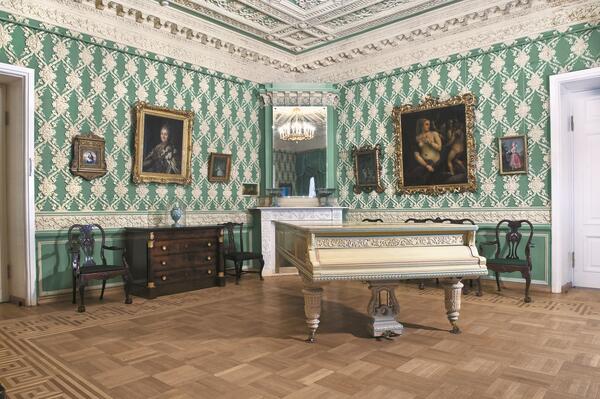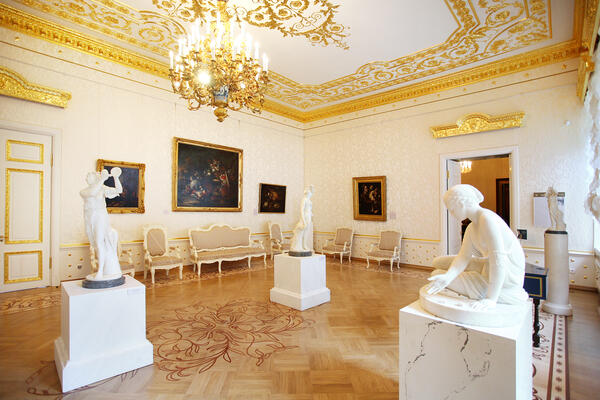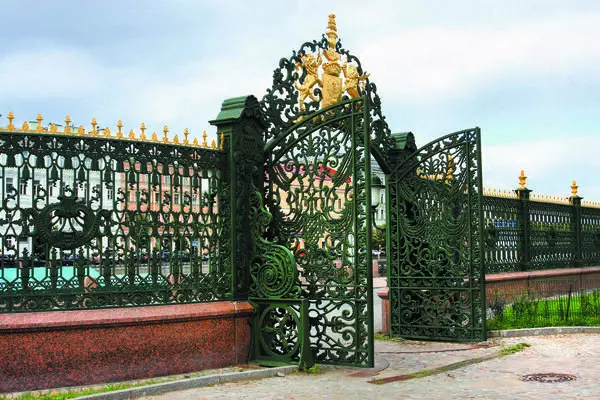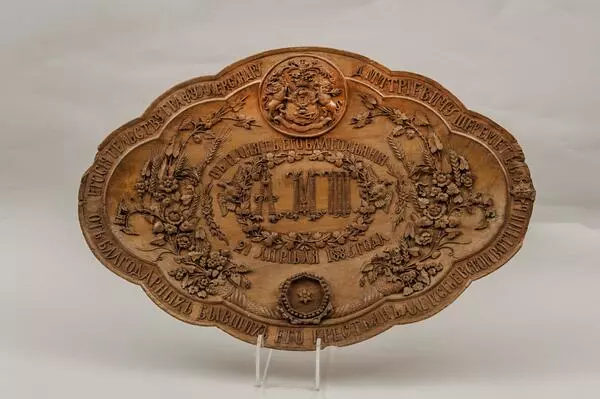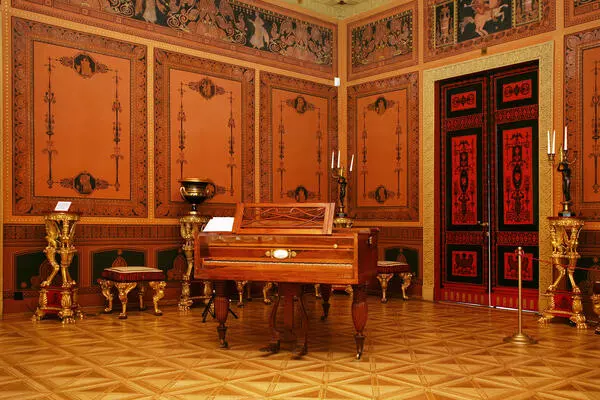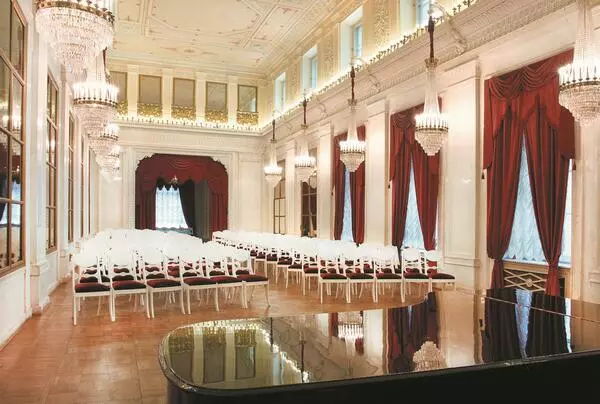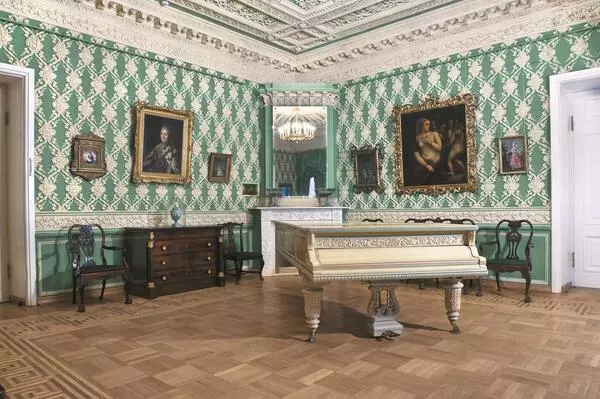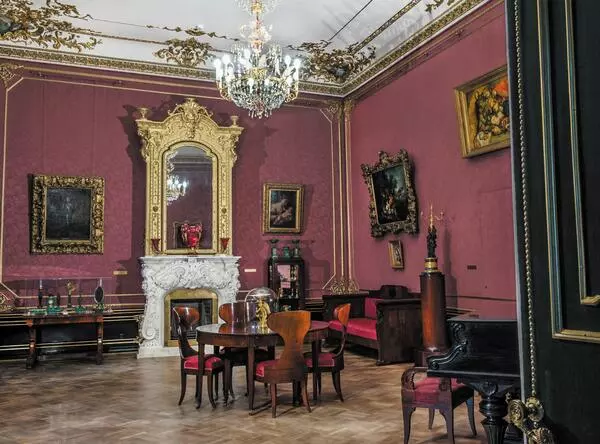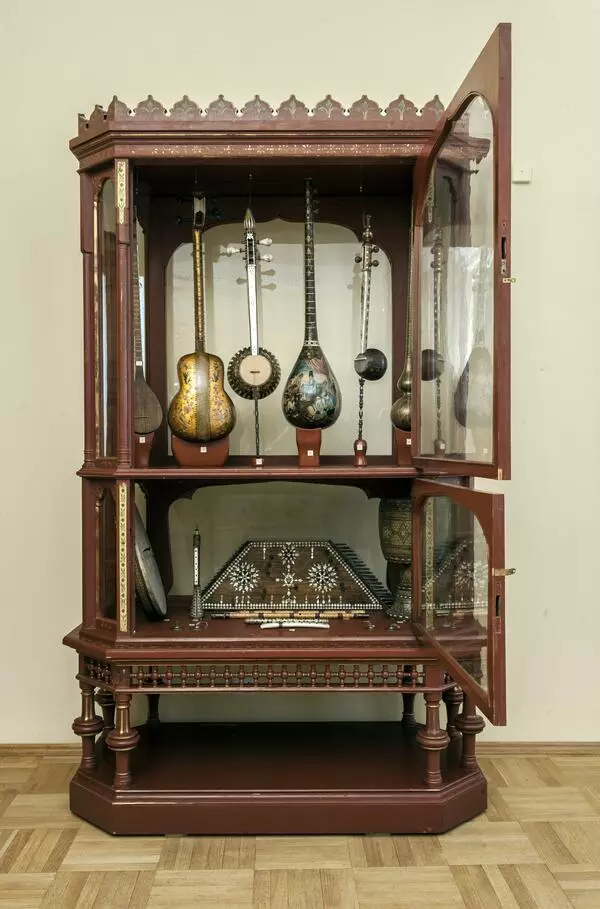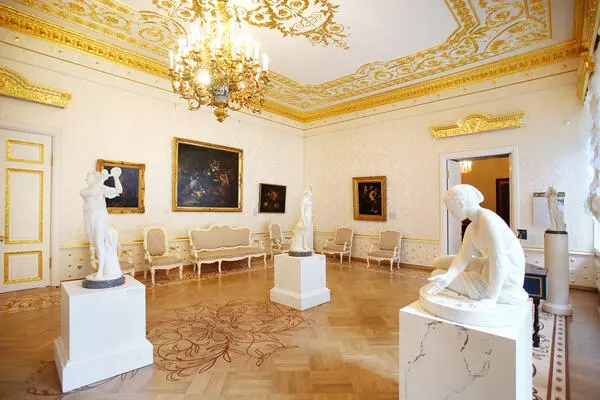The Sheremetev Palace (the Fountain House) became a branch of St. Petersburg State Museum of Theatre and Music in 1990.
The former estate of Counts Sheremetevs is a unique historical and cultural memorial and a specimen of estate-type building that is rare for St. Petersburg.
A plot of land along the Fontanka River was granted by Peter I to Field Marshal Count B. Sheremetev in 1712. The palace existing today was built in 1750. The architect of the building was S. Chevakinskiy. Such architects as F. Argunov, I. Starov, G. Quarenghi, A. Voronikhin, H. Meyer, D. Quadri, I. Corsini, N. Benois, A. Serebryakov, M. Krasovskiy and others took part in creating the interior of the palace and different buildings of the estate.
The former estate of Counts Sheremetevs is a unique historical and cultural memorial and a specimen of estate-type building that is rare for St. Petersburg.
A plot of land along the Fontanka River was granted by Peter I to Field Marshal Count B. Sheremetev in 1712. The palace existing today was built in 1750. The architect of the building was S. Chevakinskiy. Such architects as F. Argunov, I. Starov, G. Quarenghi, A. Voronikhin, H. Meyer, D. Quadri, I. Corsini, N. Benois, A. Serebryakov, M. Krasovskiy and others took part in creating the interior of the palace and different buildings of the estate.
